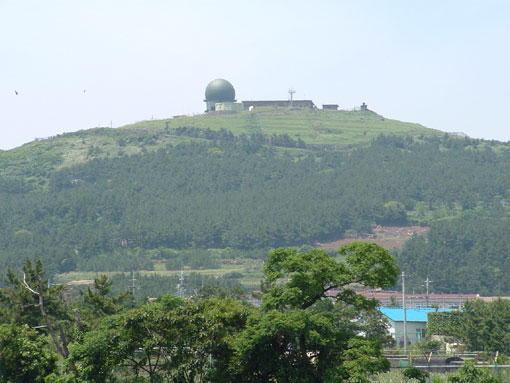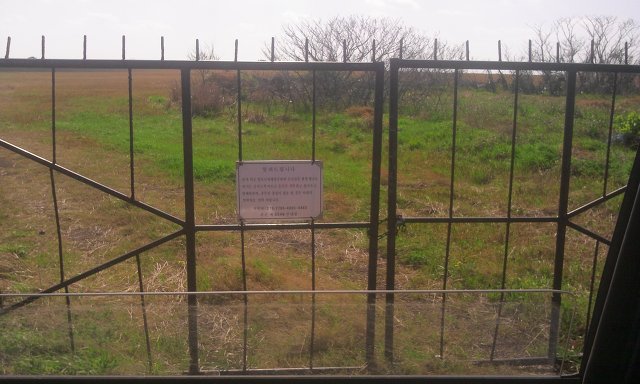Re-blog from here
1. McNabb, a returned US base in Jeju, is most oil-contaminated among
16 returned bases in Korea

The Jeju Sori, June 3, 2013, reports that the vicinity soil of a returned US base, McNabb, located in the peak of Moseulpo, Hamo-ri, Daejung-eup, Seogwipo City, Jeju, is seriously contaminated by the oil leaked from the base. The McNabb is one of 16 returned US bases in Korea on July 15, 2006.
It has been the only remaining US base in Jeju until its returning back to Korea.
According to Jeju Sori, the CBS Nocut News reported on June 3 that the degree of TPH (Total Petroleum Hydrocarbon) was measured 42,500 mg/kg, in the vicinity area of the base, as a result of the investigations on basic environment twice, from Oct. to Nov., 2011 and from Dec. 2011 to March 2012.
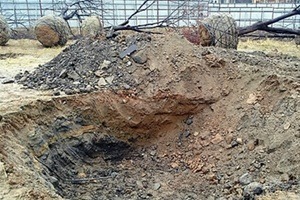
The article reads:
The number of 42,500 exceeds about 85 times of 500 that is the standard TPH in the area. Its soil contamination by oil is proved out to be most serious among 16 returned bases in Korea, by the investigation by the Ministry of Environment.
The TPH not only brings serious environment contamination. It makes impossible of plant survival itself but also contains poisonous material fatal to human body.
The investigation on environment basis on the 16 returned US bases has been carried out twice respectively from April 2008 to March 2012.
Those 16 US bases are among 23 US bases returned back to Korea in 200[6] and are the bases sold to local self-governing institutions or decided to use for other usage.
Reference:
According to Jang Dong-Hoon, an Island Provincial Council member then, has mentioned on July 25, 2006 that the amount of soil contamination of the whole area of the McNabb base was 2,938 ㎥. The TPH was 17,415 ㎎/㎏, greatly exceeding the standard of 500 ㎎/㎏. He also reported that part of underground water was also contaminated by oil belt.
“According to the report by the Ministry of National Defense in May, the degree of soil contamination of 24 of 27 US bases planned for returning back to Korea, proved out to exceed standard and the underwater contamination of 15 of those are serious.” (Source: Jeju Ilbo news on July 26, 2006)
2. History of McNabb US base
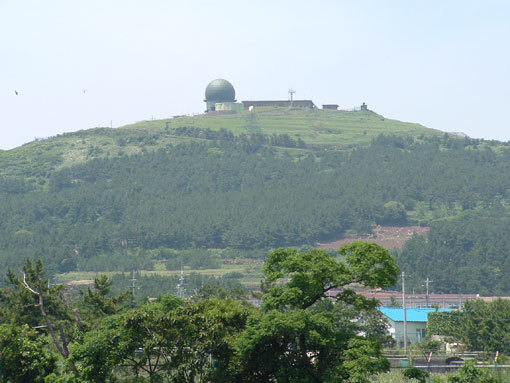
The McNabb US base in Moseulpo (*named after captain McNabb, vice-general of Alddre Air field in 1953. Source) was built in 1953 with the creation of ‘UN Air Force Base,’ in 1952.
Its whole size is about 39,000 ㎡ (* You may compare the size with the real area of the Jeju naval base project, which is about 480,000 ㎡). It was actively used as a radar base from 1958 to 1973 and its numbers of working military force used to reach to maximum 150. It was used as guerilla training and rest facility for the soldiers of the Eighth United States Army (* which commands the US Army forces of Korea) and 2nd United States Infantry Division (* which stations in Korea) since the building of the Jeju training center for the Eighth United States Army.
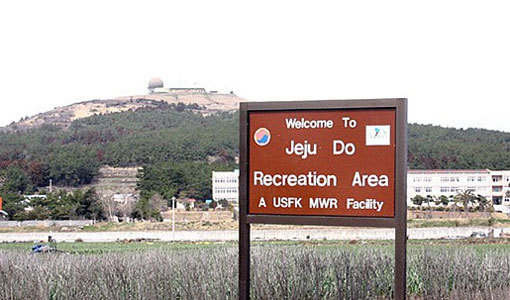
However, as the residing US military withdrew from the McNabb base in 1995 and name was changed to the Jeju rest home of the welfare center of the United States Forces of Korea , it was used more as a rest home rather than training center. As four residing managers there were moved to the welfare center of the Eighth United States Army in January 2005, the rest home was closed.
As a result of the 9th ROK-US SPI (Security Policy Initiative) meeting in Seoul from July 13 to 14, 2006, it was returned back to Korea along with other 15 bases nationwide on July 15, 2006. (source: Hankyoreh, July 15, 2006)
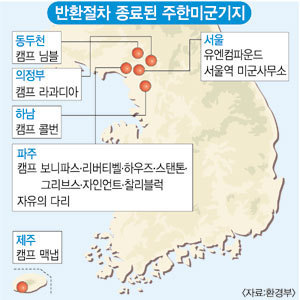
The Island people demanded at the time, “The McNabb base was used as a Japanese base during the Japanese occupation of Korea ( *1910 to 1945) then as the 9th regiment of the ROK National Defense security unit that suppressed the 4.3 uprising during the term of the US Military Government after the liberation of Korea from Japan, then used as the US base for 53 years after the Korean War. It is a vivid site of 100 years’ modern history of Jeju. We hope the facilities can be used in the future to contribute for the image of Jeju, the “Peace Island.” ( Source: Hankyoreh, July 15, 2006)
The government stated on July 14, 2006, that “The 15 US bases nationwide returned back to Korea would be returned back to local self-governing institutes again after the curing of contamination there.”
However, it was about one and half month later that the Jeju Ilbo reported that the Ministry of National Defense stated in relation to the returning of McNabb base that the Ministry would neither transfer nor sell the base to the local self-governing institute (Jeju Island) but the ROK air force would utilize it.
Despite the Island people’s opposition, it was returned back to the Ministry of National Defense on April 13, 2007 and it was decided that the camp McNabb is used by the ROK air force base in April 2008.
At the time, personnel in the US base relocation team of the Ministry of National Defense, clearly stated that “since there has been a ROK air force unit (radar base) inside the camp McNabb, the military’s usage plan on the base has already come out. The Ministry has no plan to sell or hand over it to the Jeju Island.”

(Source: Ohmynews, Dec. 3, 2009)
Though the air force headquarter personnel stated that it has no concrete plan on the usage of the base in the future, some suspected that the McNabb base would be a powerful candidate area for the idea of creation of the Jeju unit of the ROK air force search and rescue corps, reflected in the mid term national defense plan from 2007 to 2011.
Anyway, the decision to hand over the McNabb base to the Ministry of National Defense was different from the other returned bases that were handed over to the local self-governing institutes, some of which were to be developed into history or civic parks. (Source: Jeju Ilbo, Aug. 30, 2006)
Such decision also affected to the delay of the basis investigation on environment, in the vicinity areas of provision zones from the US forces of Korea.
The basis investigation on environment on the vicinity areas of Camp McNabb, located in Jeju, was barely carried out at the latter part of 2011, after 4 years since the government measure on it was set up in October, 2007.
Further the investigation target area was also limited. The investigation was to be carried out within 100 m areas from the border lines of air force base. The inner area of military unit became to be excluded from the investigation in 2011, for the reason that the inner area belongs to air force.
And eventually, the result of the investigation turned out that the vicinity of the McNabb base is the most contaminated among 16 returned based, compared to the investigation on soil contamination in 2005 when it was reported that while the inner area of the base was partly contaminated, the outer area of it was not. (Source: Jemin Ilbo, Aug. 18, 2011)
3. Will the McNabb base be used again for militarize Jeju?
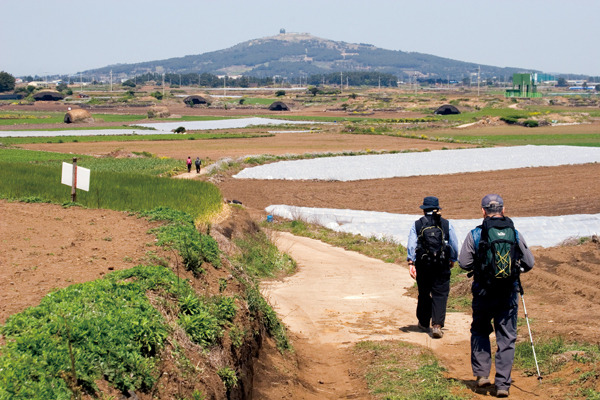
As mentioned above, the returned McNabb base is currently OWNED and managed by the ROK Ministry of National Defense. There has already been a suspicion that the McNabb would be used for the creation of Jeju unit of search and rescue corps, reflected in the mid term national defense plan from 2007 to 2011. The future usage of the base could be very related to the old Alddre Airfield located in the south of it, nearby.
The old Alddre air field has never been completely returned back to the Jeju Island, but owned by the Ministry of National Defense and is suspected to be used for the active military air field if Jeju is to be militarized.

It was the old Alddre air field that mattered along with other 9 articles on April 27, 2009 when Kim Tae-Hwan, ex-governor of the Island signed on Memorandum of Understanding (MOU) Related to the Construction of the Civilian-Military Complex Port for Tour Beauty with the Ministers of National Defense and Land, Transportation and Maritime Affairs then. The MOU itself turned out to be dual in September, 2011 when Kang Chang-Il, Jeju-based National Assembly man disclosed that the title of the document owned by the Jeju Island and Ministry of National Defense (MND) were different.
In the document owned by the MND, the words of ‘Jeju naval base,’ was clear with the words of Civilian-Military Complex Port for Tour Beauty in parenthesis, which made people make sure that the currently enforced naval base project would be PURE military base. For the whole translation of MOU, see here or here.
It was in that fake MOU that the condition on the use of Alddre Airfield was stipulated.
Article 5 (Use of the Alddre Airfield etc.) (1) The Minister of National Defense allows the Jeju Self-Governing Island, through the discussion with the Jeju Self-Governing Island, to use the area of the popularly known as the Alddre airfield that is located in the Daejung-eup, City of Seogwipo and in the jurisdiction of the City of the Ministry of Defense, for the regional development of the Jeju Self-Governing Island, according to the legal procedures. (2) The Ministry of National Defense confirms that he has no plan to deploy fighter airplanes in the Namboo (* meaning ‘southern’) Search & Rescue troop unit of the air force
The old Alddre air filed was built on the wide field under the Songak Mt (84m), Sangmo-ri, Daejung-eup, Seogwupo City, Jeju, by the Japanese military in 1930s. In 2002, it was designated as No. 39 modern age cultural heritage by the ROK government in 2002.
The Japanese built large size military facility in the Jeju Island since 1920s (Some say the beginning year was 1926). The Alddre air filed was completed in Daejung-eup in the middle of 1930s and fighter planes sortied from there bombed Nanjing, China 700 km distance from it in 1937 when the Sino-Japanese War occurred. ( * Therefore some people used to call the Moseul Peak as the Kookje bong meaning ‘international Peak’)
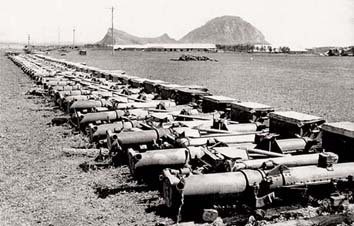
Total 20 hangars of 20 m width, 4 m height, and 10.5 m length were built there. Akatombo, a training airplane was also secretly stored there. (Source)
The old Alddre air filed is currently a tourist place, part of the route 11 in the Jeju Olle. Many parts of the field are used for farming such as growing potatoes (Jiseul in the Jeju dialect) as the MND has rented the land to farmers. However, the suspicion on its revitalized military usage in relation to the matter of new airport location has been raised at least twice in the National Assembly, by now.
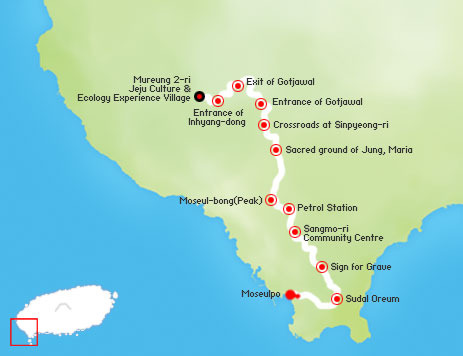
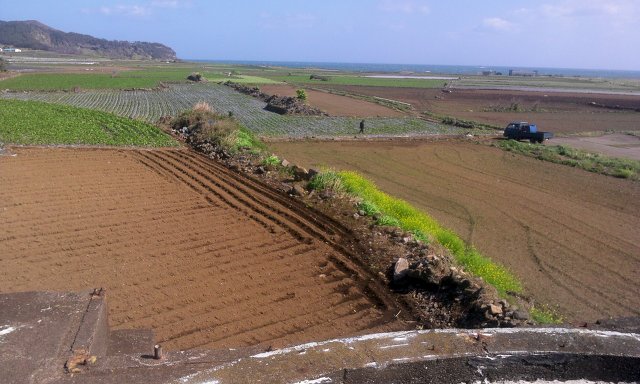
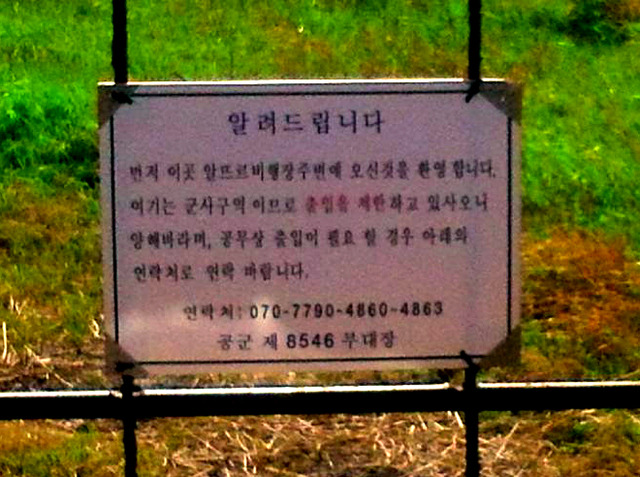
(Photo by Save Jeju Now on April 7, 2013)
Roh Hoe-Chan, Progressive United Party, has made a remarkable claim in the National Assembly inspection session in May 2007, that “the Ministry of National Defense and Jeju Island have agreed that the Island provides 300,000 pyeong (about 99 ha) to an air force in case the 2nd new air port is built on the condition that the air force concedes the Island old Alddre air field of about 600,000 pyeong (about 198 ha). It meant the Air Force is ready to use the Alddre Air field as an area for the South zone search and rescue corps unit unless the Jeju provides an alternative area to the Air force. (* For reference the Jeju naval base project is of about 48 ha.) (Ohmynews on Sept. 3, 2012/ See here or here for the source of citation)
It was Oct. 18, 2012 again that the issue was raised in the National Assembly inspection on the ROK air force on the ‘South zone search and rescue corps’ that is being discussed to be installed in the old but currently unused Alddre air field, Moseulpo.
Kim Jae-Yoon, Democratic United Party, a member of the Defense Committee of the National assembly claimed that it is a tactic ultimately to build an air force base. He claimed that the Jeju, the Island of peace is at the risk to be degraded as the ‘Island of military base.’
Saying that “when I demanded the air force on the material on the ‘South zone rescue and search corps unit, the air force replied me that it is planning a creation of it for national security and people’s safety,” Kim interpreted that “However, given that rescue and search corps unit is a non-combat corps that is in charge of search and rescue, its words that it creates it for the securing of national security connote that the rescue and search corps unit is, after all, combat corps.”
Will the Jeju be militarized? The matter has already been concerned about. With the recognition on the McNabb base near the Alddre airr field, the issue has to be more considered in coming future.
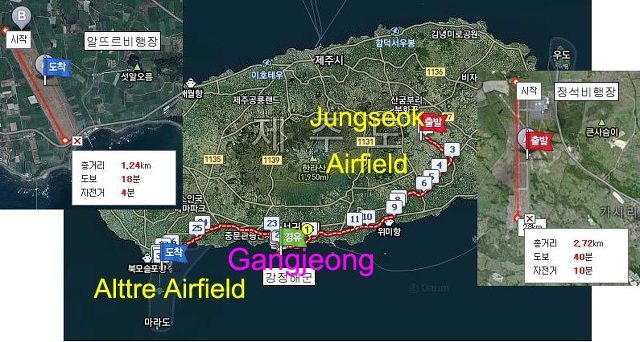
To remind, it is important to note that the vicinity area in the McNabb base and Alddre air field is one of the big massacre sites of 4.3 period (1947 to 1954)
During the Korean War (1950 to 1953), it was the site where about 210 innocent, many of them in their 20s were brutally killed and buried, stamped as communists and arrested by the vicious law on preliminary detention-the trace of Japanese imperialism- under the US puppet Rhee Syng-Man government. The tragedy of 4.3 was lingering throughout and even after the Korean War. It was only under the civilian government in the 21st century that their honors were finally recovered., with the common tomb nearby cherished by their descendants.
If the Jeju is militarized again and war breaks out in Korea, we will see another repetition of history in Jeju. That is why it is important for us to make efforts for the Jeju to be demilitarized.
For more photos on the massacre site called Seotalorem and the common tomb called Baekjoilsonjimyo (meaning 100 ancestors but one common descendants) , see here.
You may also see
Two killed girls 11 years ago revive the move for the total revision of ROK-US SOFA, upon the 60th year of Armistice Agreement
United States, Stop conspiracy for military control and financial pressure to ROK!
